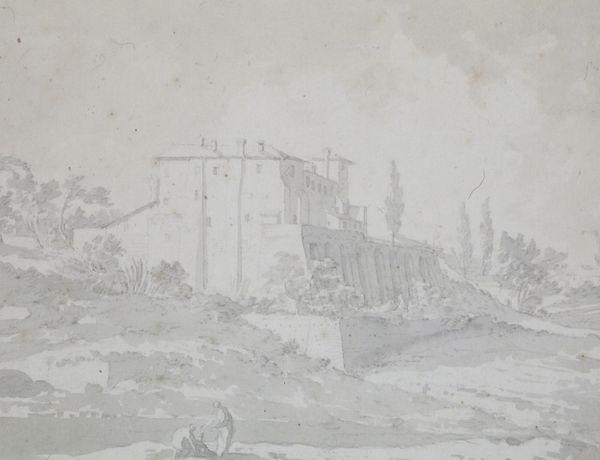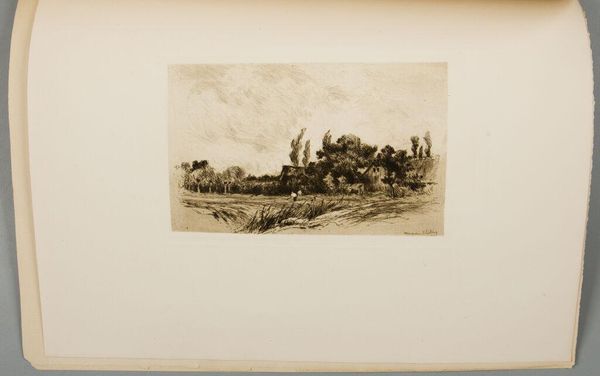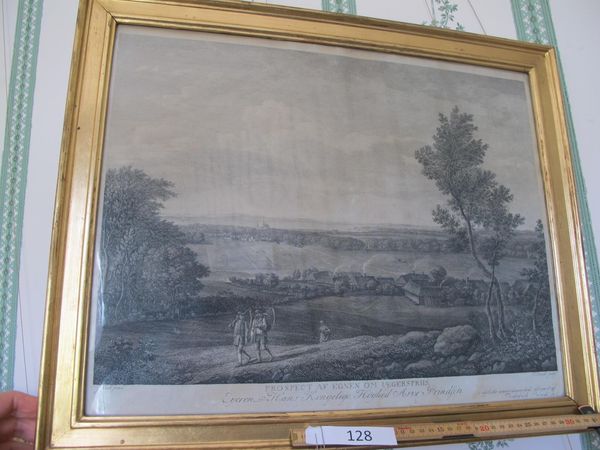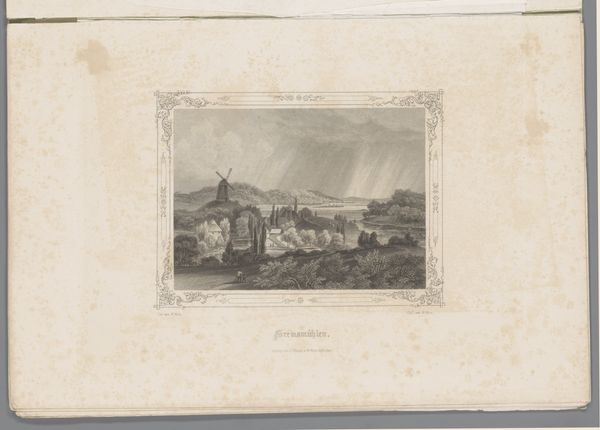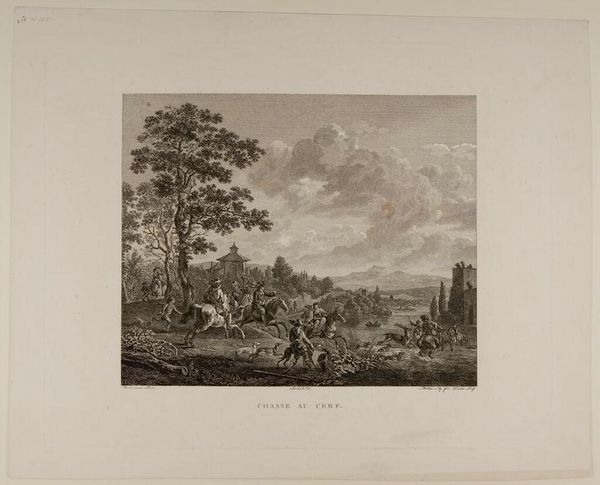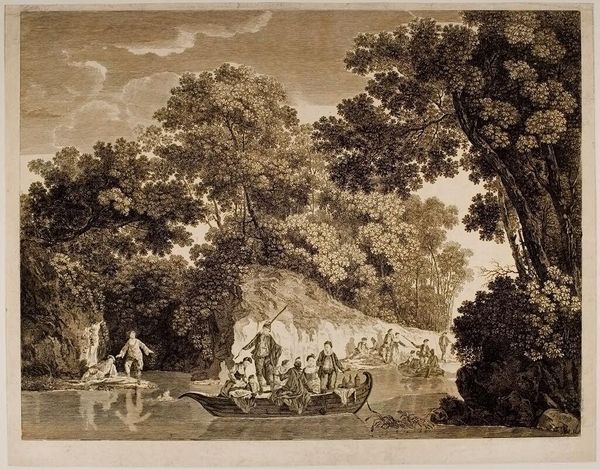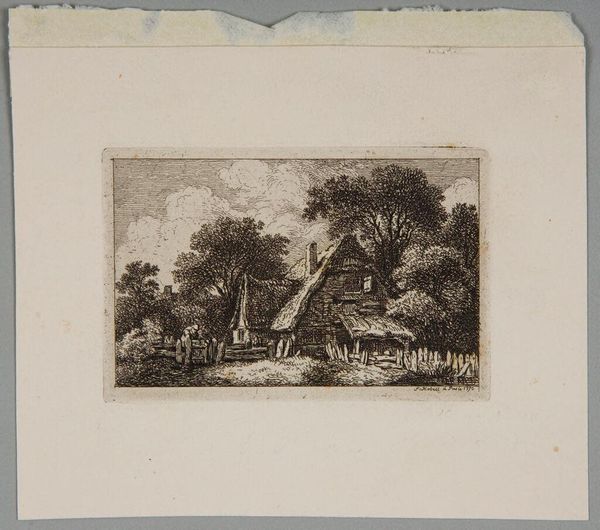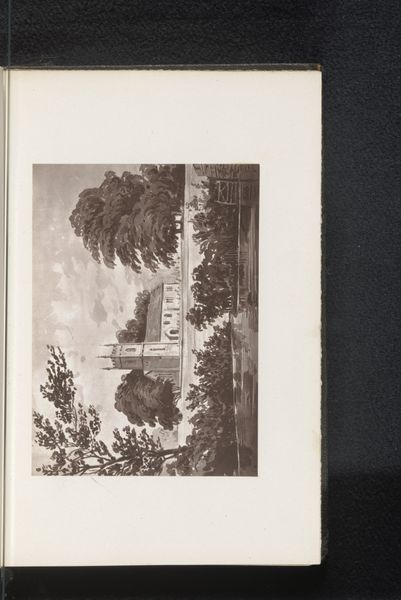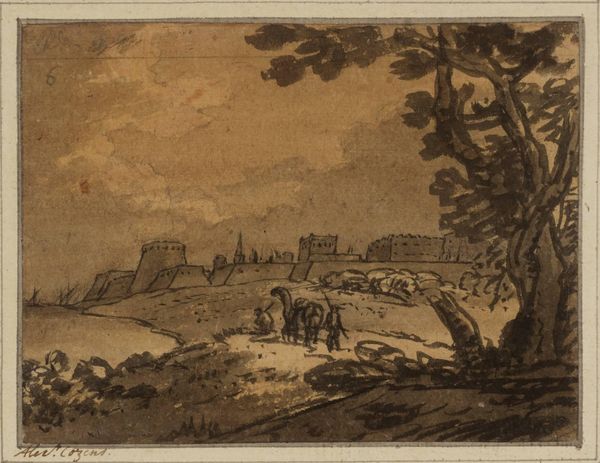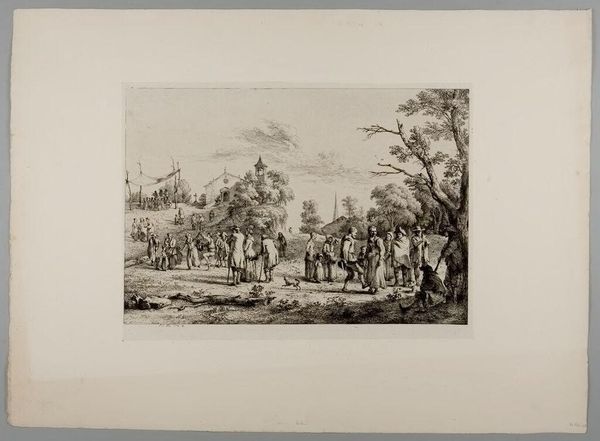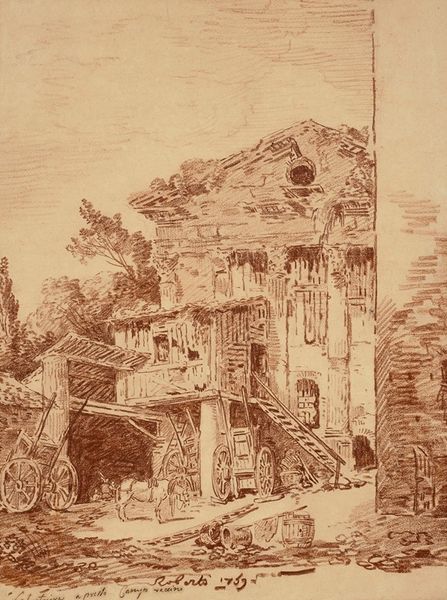
print, engraving
# print
#
landscape
#
15_18th-century
#
engraving
Dimensions: 480 mm (height) x 600 mm (width) (brutto)
Editor: Here we have "Landscape with Shepherds and Cattle," a 1786 engraving by Frederik Ludvig Bradt. It feels quite classical and picturesque. What catches my eye are the different textures he's achieved with the engraving, from the stormy sky to the crumbling stone. What do you see in this piece? Curator: What I find compelling here is the material process. Bradt's choice of engraving allows for incredible detail and reproducibility. This speaks to the societal demand for landscape imagery in the late 18th century – these weren't unique artworks for the elite, but something more accessible due to the printing process. Look closely; do you notice the density of the lines in the shadows? Editor: Yes, the way the light is built up through the density of lines is incredible. Was this a common technique at the time, and did that impact its reception? Curator: Precisely. Engraving, as a commercial practice, flourished in this era. Consider the labour involved in producing such a plate, the skill of the engraver, and the dissemination of the images to a wider audience. It elevates this from mere landscape to a document of its time, reflective of shifts in art consumption and production. Do you think that changes our interpretation? Editor: Absolutely! Viewing it through the lens of production and consumption, the piece moves beyond just representing a pretty landscape, and we start seeing it as an artifact embedded in specific economic and social structures. Curator: Indeed. By focusing on the means of production and distribution, we uncover layers of meaning beyond the purely aesthetic. Editor: I'll definitely look at engravings differently now, paying more attention to the 'how' as well as the 'what'. Curator: And that "how" reveals so much about the society it emerged from.
Comments
No comments
Be the first to comment and join the conversation on the ultimate creative platform.

